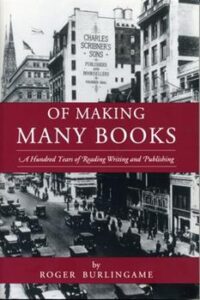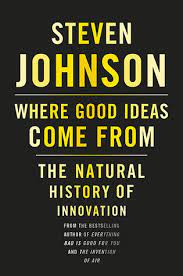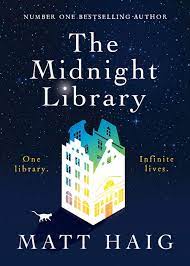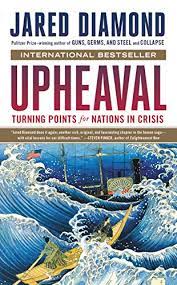Once I received a letter from a reader who said that a book published by the firm I worked for had plagiarized his own writing. This was a serious charge and a rather shocking accusation because our book was written by a senior scholar with a stellar reputation. Could this be possible?
What made the case more interesting was that the writer of the letter said he had been a student of this scholar some fifteen years before. The scholar, claimed the student, had incorporated some of the student’s paper into the book we published. And he provided evidence. Several paragraphs from his paper matched exactly or very closely portions of the book.
We sent the material on to the author for his comment. After reviewing it, he admitted it was true. How had it happened?
 The author thought the student’s paper was excellent and began referring to it, even reading from it, in his lectures over the next several years. Slowly, in his class notes, the student’s name became detached from the quotations. Then the quotation marks disappeared. When it came time to write a book based on these lectures, the author had forgotten where this material in his notes had come from and assumed it was all his own.
The author thought the student’s paper was excellent and began referring to it, even reading from it, in his lectures over the next several years. Slowly, in his class notes, the student’s name became detached from the quotations. Then the quotation marks disappeared. When it came time to write a book based on these lectures, the author had forgotten where this material in his notes had come from and assumed it was all his own.
How did we resolve this? We and the author agreed to revise the book in the next printing. We put the student’s material in quotation marks and gave due credit in the footnotes.
The Lesson to Be Learned: Whenever you prepare a talk, a sermon, or a lecture—always footnote your speaking notes as if it were to be published. You never know when you might take some old material (even decades later) and work it into a published piece. Include not only the name of the person responsible for the quote (or for the point of fact) but also, the name of the book, the publisher, date of publication, and page number. Then you won’t have to spend hours trying to track it down—which can sometimes be impossible, even in the internet era. I know—I’ve tried.
Corollary: When speaking, give credit to your sources, whether quoted or summarized. You can’t give full bibliographic information since that would make your talk impossible to listen to. But you can say, “As David Brooks says in his new book . . .” That is intellectually honest (you didn’t come up with the idea), and it doesn’t unduly interrupt the flow of your talk.
—
photo credit: Adrian Schweiz (Pixabay)



 Two cows are standing in the field. One asks the other, “Are you worried about this mad cow disease going around?” The other relies, “Why should I be? I’m a helicopter.”
Two cows are standing in the field. One asks the other, “Are you worried about this mad cow disease going around?” The other relies, “Why should I be? I’m a helicopter.”
 In chapter 11 of
In chapter 11 of  Johnson also considers two ways ideas arise. One is in the “Eureka moment” that I focus on in Write Better. The second is “the slow hunch” pattern of idea generation. That is, we muse over a puzzling observation for a period of months or even years before a solution emerges in bits and pieces, rather than all at once. In either case, interacting with many different perspectives, subjects, and people is central to the solution.
Johnson also considers two ways ideas arise. One is in the “Eureka moment” that I focus on in Write Better. The second is “the slow hunch” pattern of idea generation. That is, we muse over a puzzling observation for a period of months or even years before a solution emerges in bits and pieces, rather than all at once. In either case, interacting with many different perspectives, subjects, and people is central to the solution.  Many people fear public speaking more than death. Over years of speaking to small groups and rooms of hundreds, following certain practices have helped me prepare and be relaxed (ultimately allowing me to form a habit of speaking that has even made doing so spontaneously possible).
Many people fear public speaking more than death. Over years of speaking to small groups and rooms of hundreds, following certain practices have helped me prepare and be relaxed (ultimately allowing me to form a habit of speaking that has even made doing so spontaneously possible).
 That, however, while valid, can be a bit dull. Here’s another strategy. Extend the metaphor embedded in the cliché. Again, good, general advice but can I give an example? Yes, I can.
That, however, while valid, can be a bit dull. Here’s another strategy. Extend the metaphor embedded in the cliché. Again, good, general advice but can I give an example? Yes, I can.
 Counterintuitively, limiting your audience can increase your readership. How? By making sure you go deeply into that narrow group. Writing successfully for all parents is hard because there are so many other resources and bestselling books already available. You might therefore get fewer readers for the broad audience than for the narrow one where there is less competition.
Counterintuitively, limiting your audience can increase your readership. How? By making sure you go deeply into that narrow group. Writing successfully for all parents is hard because there are so many other resources and bestselling books already available. You might therefore get fewer readers for the broad audience than for the narrow one where there is less competition. Be alert, however, that not all graphic designers have the same training or experience. Someone expert at magazine covers or web pages may wrongly apply those design principles to a book page. They are not the same. Try to find someone who knows proper proportions for margins, line spacing (or leading), and so forth—for books.
Be alert, however, that not all graphic designers have the same training or experience. Someone expert at magazine covers or web pages may wrongly apply those design principles to a book page. They are not the same. Try to find someone who knows proper proportions for margins, line spacing (or leading), and so forth—for books.